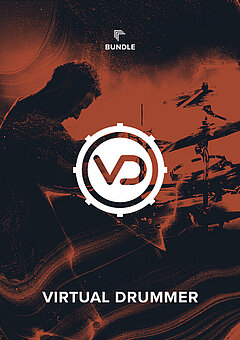The Ultimate Guide to Percussion
A deep dive into the fundamentals of percussion, how to use it to improve any beat and add variety to your tracks.
MAY 16TH, 2021
To be clear, in this instance we’re excluding the ‘core beat’ instruments like kick, snare and hi hat from the definition of percussion. Especially as a producer, you’ll likely find it helpful to keep the two categories distinctly separate, since genre has a huge impact on what sort of beat you want to use, while it matters much less for percussion. Percussion is typically an accent designed to support whichever beat you decide upon. These are the topics covered in this article:
- Different percussion instruments
- ‘Humanizing’ percussion
- Using percussion to improve the beat
- Adding variety and creating a full song
- Percussion in film and game scores
- Wrapping up
Different percussion instruments
Some percussion is commonly classified under ‘world’ instruments, which are typically native to a certain region of the world and deeply rooted in a culture’s history. Here are a few of the most common ones you’ll encounter:
- Shakers
- Tambourine
- Congas
- Bongos
- Cajon
- Taikos
You can of course use any instruments you desire in any track, but keep in mind the implications they’ll have for your listeners. For example, if your audience hears the tabla, they’re going to have mental images of India, while a banjo may conjure up pictures of the American countryside. We have strong cultural and regional associations with many instruments, and you should use this to your advantage when you want to put a fun spin on the track you’re writing to surprise and thrill your listeners.
It would take multiple books to describe all the possible grooves from around the world, but suffice it to say there are two critical pieces to every groove: the rhythm being played and the instruments used to play it. The better you know both parts of every groove, the quicker you’ll be at adding them to your tracks as you use them verbatim or freely swap out rhythms and instruments to create something new.
‘Humanizing’ percussion
In any sort of electronic music, you’re likely used to putting the kick and snare precisely on the grid or piano roll. The slightest bit off and the entire rhythm can begin to break down. However, it’s the exact opposite with percussion — if the entire groove is placed squarely on the grid, it will sound fake, brittle, and powerless. This is because percussion is entirely composed of real, acoustic instruments, and live performances are never ‘perfect.’ As a producer, there are certain steps you must take to humanize your percussion grooves, otherwise they’ll actively detract from your music.
The other main element to consider when humanizing percussion is note velocity. In real life, percussionists can’t possibly play every note at the exact same volume, nor would they want to. This is largely irrelevant if you play your percussion sequences on a MIDI keyboard which records how hard you press the keys, but if you choose to draw your grooves directly into the grid or piano roll, mastering this becomes critical. Make sure every single note is played at a different velocity than the last few before it along with pushing notes slightly off the grid. Some DAWs have tools to automatically shift note velocities and timings, such as Ableton’s Velocity MIDI effect and Groove Pool, respectively, though you always have the option to make the changes manually if you prefer to have more control or no tool works perfectly to your satisfaction.
Using percussion to improve the beat
If you produce EDM, adding percussion to the core beat (kick, snare, hi hats) can create far more depth and fill in empty space in your mix. Even a subtle groove behind the kick and snare can go a long way to making your track sound more polished and professional. Focus on the core beat first; as soon as you’ve locked it in, feel free to go crazy with percussion. Try tons of different grooves without regard to which genre they come from — cross-pollinating genres in your percussion groove can lift your music way above generic tracks in the genre you’re writing for.
Sometimes it’s best to be very intricate and exert fine control over your entire percussion section; other times, you just need something quick and dirty to round everything out before you bounce or print your track. In this case, add UJAM’s Groovemate ONE and load up the first preset that ‘clicks’ with your beat. ONE is full of shakers, tambourines and claps designed to add some spice and rhythm to any beat, and it’s completely genre-independent. If you choose a simple loop and later decide you want something more nuanced or detailed, ONE makes it easy to modify the rhythm by hand, allowing you to get extremely granular — something you’ll never get from a simple percussion loop!
Adding variety and creating a full song
The easiest trap to fall into is thinking in ‘loops,’ which is one of the dangers of digging through a sample library and tossing anything that sounds good into your track. What happens at the end of a section? Do you switch to another loop, keep it going, drop it completely, or something in between? Instead of dragging in a loop, setting and forgetting it, think of it as coming from real musicians who would quickly tire of playing the same thing over and over again!
This isn’t to say you shouldn’t use loops — you definitely should, as long as you’re adding variety and actively bridging the current section to the next one (snare risers, drum rolls, fills and anything else responsible for your percussion evolving throughout the course of the song). Don’t limit this notion only to percussion, either; music should never be completely static, unless it’s truly deliberate. Always be adding or subtracting motion over time, helping the listener to anticipate what’s coming next and consistently paying it off in the delivery.
In terms of different parts of the song, each broad section should have its own distinctive rhythm and percussion, which you may choose to repeat every time a related section comes up (i.e. using the same groove in each chorus, another in every verse, yet another in every drop, etc.) to create a balance of consistency and variety. If you’re not sure if the percussion is ‘good enough,’ solo all your percussion instruments and listen to them without any other instruments in the entire track. Aside from the parts where you chose not to include percussion at all, is the result interesting to listen to, or is it a little lacklustre? Make adjustments as needed — once you genuinely enjoy the percussion on its own and it still fits into your track when not soloed, then you can be reasonably confident you have a winner!
Percussion in film and game scores
Many soundtracks are dominated by bombastic, rapid percussion sequences composed of instruments from around the world. A few sample libraries are responsible for a large majority of the non-live percussion you hear in movies and video games, such as Heavyocity’s Damage and EastWest’s Stormdrum (in its multiple iterations), and they carry a thunderous quality that isn’t typically present in almost any other genre. (Fun experiment: try using cinematic percussion in EDM and see what you can create!)
Taikos are very popular for their earth-rumbling bassiness and power, as are orchestral bass drums, amongst many other instruments. Another fun way to achieve huge, cinematic percussion sounds is through specialized drum kits with heavy compression and reverb, punching up the attack and giving a meatier body to every hit. As long as you take care to balance them in the mix, you can more or less add as many percussion layers as you want to achieve a larger than life sound — just make sure you keep the attacks punchy and clean while also controlling your low and low mid frequencies with subtractive EQ and possibly multiband compression.
Cinematic percussion is fantastic for conveying strength and intensity, especially in moments where you’re drawing a blank in your melody and harmony writing! When in doubt, pull up some big drums and play around until you discover a pattern which captures the energy you’re looking for — record it, mildly quantize it so as not to sound robotic, and layer on both large and small percussion to achieve depth and variety. With as little as three such percussion tracks, you can create a huge sound that provides inspiration as to how to continue with the musical parts of the cue or track you’re writing.
Wrapping up
Percussion can range from a simple accent to the singular force that carries an entire song, and you want to listen to as wide a variety of music as possible so you know exactly what each song needs while you’re producing it. Your grooves can be huge and complex, but they certainly don’t need to be — it all depends on the genre, context, and how different or creative you want to be. Feel free to push the boundaries of genre wherever you possibly can, because that’s how music evolves (and it’s how you’ll distinguish yourself in a popular or crowded genre!).
Play with the percussion grooves of different genres and cultures from around the world, starting with the core beat, building up the groove, humanizing the note timings and velocities, and creating variety across different sections as you write and produce. Change the rhythms and instruments however you like, but do so intentionally as you’ll progress much faster as a producer that way. Practice, listen to tons of different music, and create tracks always with a spirit of fun and experimentation!
Stay up to date
Sign up and we’ll send you an e-mail with product news and helpful stuff every now and then. You may unsubscribe at any time.
Defy Limits
We develop software solutions that enable people to create, consume and interact with music.




